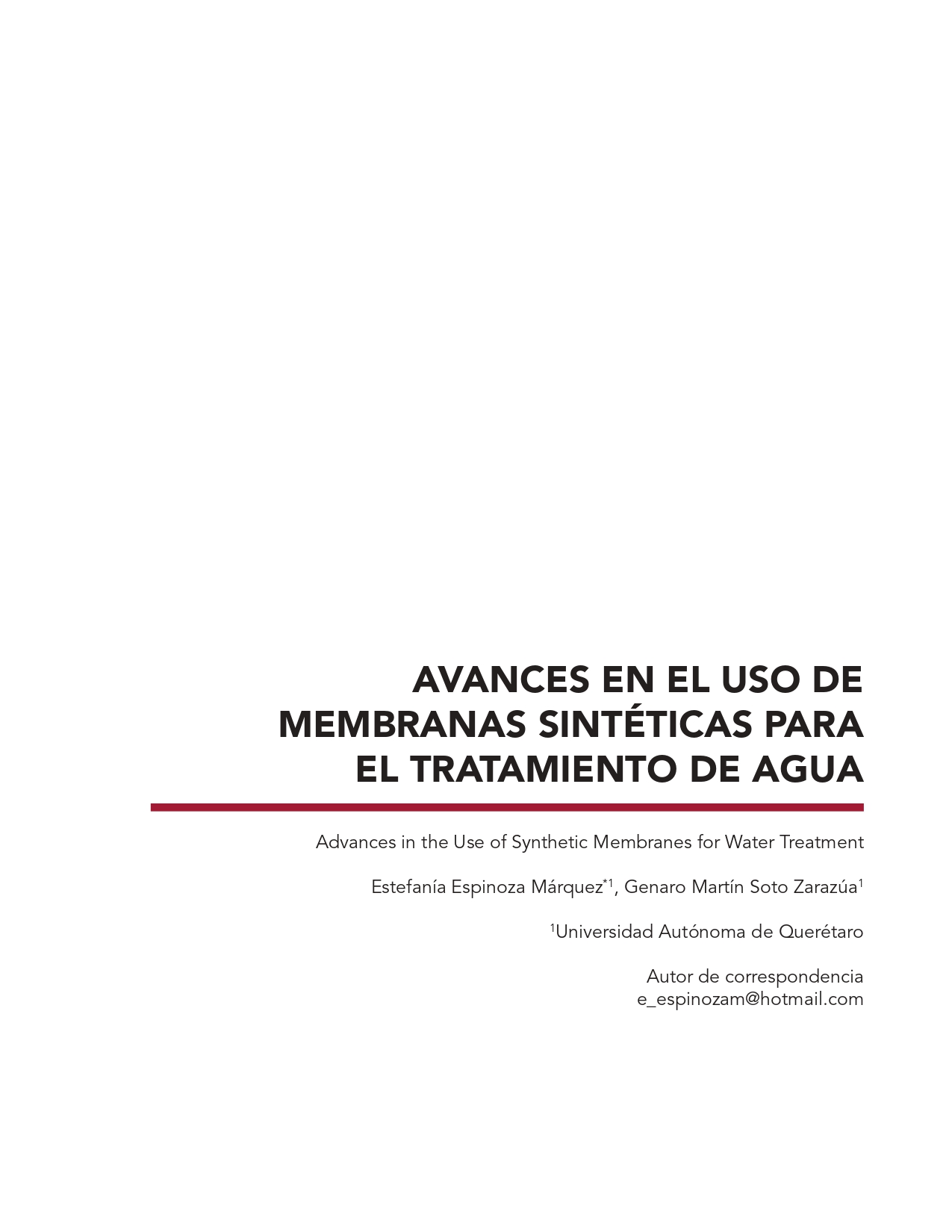Abstract
This paper reviews the progress of membrane technology for its application in water treatment processes and its potential to generate reuse and purification systems through more efficient and affordable strategies than conventional ones. Advances in the area of nanomaterials have offered the possibility of manipulating the physical and chemical characteristics of the membranes to improve their permeability and selectivity to certain types of pollutants and reduce the problem of fouling, which is their main factor of decrease in performance. The objective of this review is to describe how advances in materials science and nanotechnology inte grated with membrane technology for water treatment reduce the problem of membrane fouling, as well as improve the selectivity of contaminants, thus proving to be an effective strategy to optimize the existing treatment processes, and enabling the development of low energy consumption systems with a more efficient use of resources.
This work is licensed under a Creative Commons Attribution-NonCommercial 4.0 International License.

